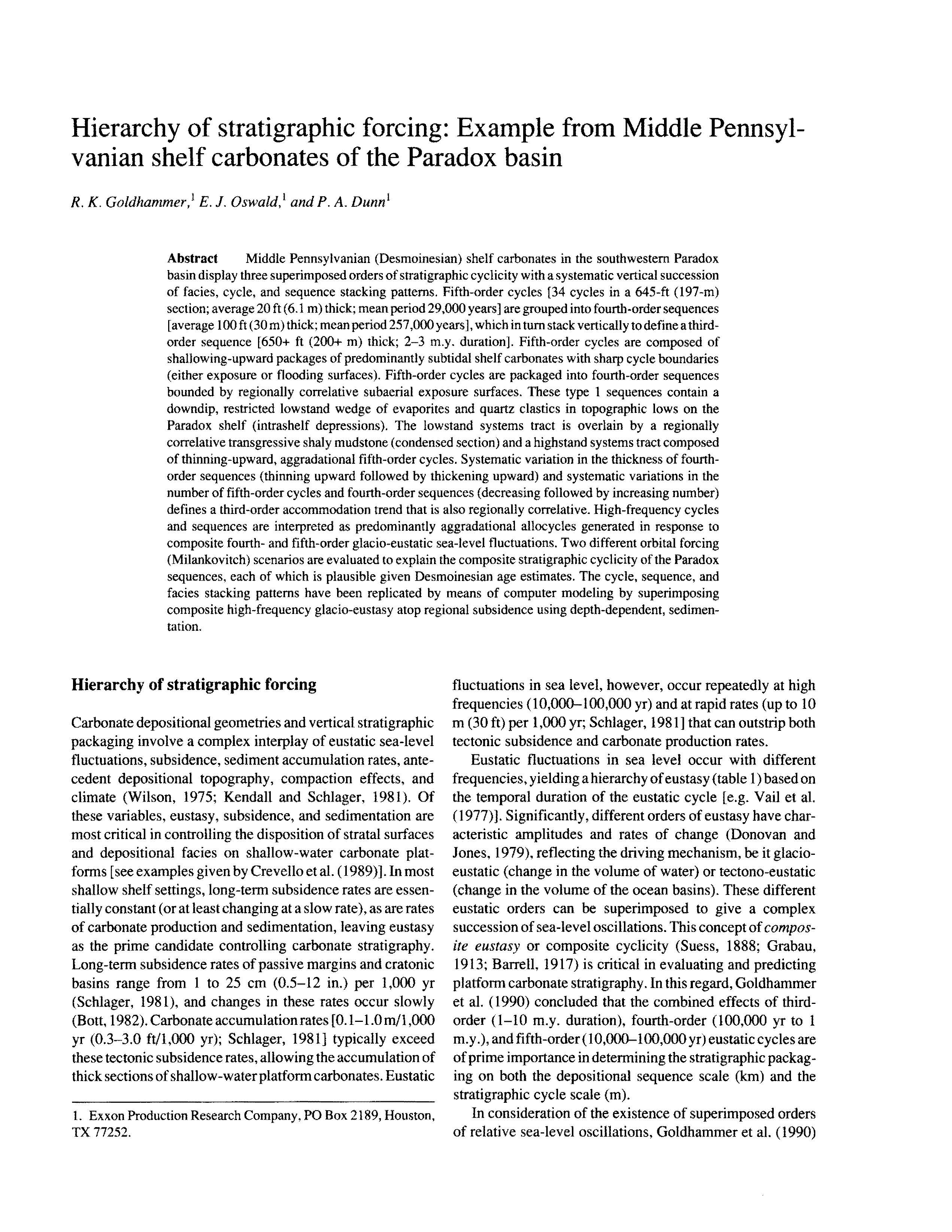Hierarchy of stratigraphic forcing: Example from Middle Pennsylvanian shelf carbonates of the Paradox basin
DOI:
https://doi.org/10.17161/kgsbulletin.no.233.20468Abstract
Middle Pennsylvanian (Desmoinesian) shelf carbonates in the southwestern Paradox basin display three superimposed orders of stratigraphic cyclicity with a systematic vertical succession of facies, cycle, and sequence stacking patterns. Fifth-order cycles [34 cycles in a 645-ft (197-m) section; average 20 ft (6.1 m) thick; mean period 29,000 years] are grouped into fourth-order sequences [average 100 ft (30 m) thick; mean period 257,000 years], which in turn stack vertically to define a third-order sequence [650+ ft (200+ m) thick; 2-3 m.y. duration]. Fifth-order cycles are composed of shallow ing-upward packages of predominantly subtidal shelf carbonates with sharp cycle boundaries (either exposure or flooding surfaces). Fifth-order cycles are packaged into fourth-order sequences bounded by regionally correlative subaerial exposure surfaces. These type 1 sequences contain a downdip, restricted lowstand wedge of evaporites and quartz clastics in topographic lows on the Paradox shelf (intrashelf depressions). The lowstand systems tract is overlain by a regionally correlative transgressive shaly mudstone (condensed section) and a highstand systems tract composed of thinning-upward, aggradational fifth-order cycles. Systematic variation in the thickness of fourth-order sequences (thinning upward followed by thickening upward) and systematic variations in the number of fifth-order cycles and fourth-order sequences (decreasing followed by increasing number) defines a third-order accommodation trend that is also regionally correlative. High-frequency cycles and sequences are interpreted as predominantly aggradational allocycles generated in response to composite fourth- and fifth-order glacio-eustatic sea-level fluctuations. Two different orbital forcing (Milankovitch) scenarios are evaluated to explain the composite stratigraphic cyclicity of the Paradox sequences, each of which is plausible given Desmoinesian age estimates. The cycle, sequence, and facies stacking patterns have been replicated by means of computer modeling by superimposing composite high-frequency glacio-eustasy atop regional subsidence using depth-dependent, sedimentation.
Downloads

